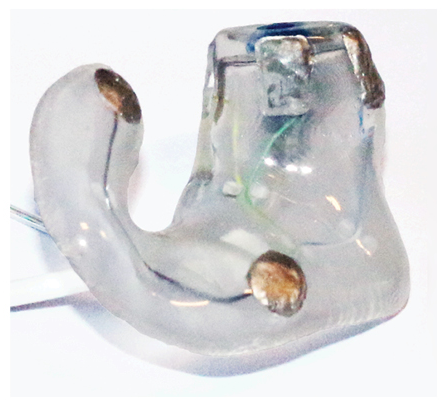Can monitoring of brain waves be used to setup and adjust the performance of a hearing aid?
Hearing provides vital information about the surrounding environment and so sound detection and auditory perception are utilized to communicate, navigate and avoid dangers. Hearing loss affects many aspects of sound perception and may, in addition to elevated hearing thresholds, be associated with e.g. reduced frequency selectivity and auditory dynamic range, leading to reduced speech intelligibility and difficulties in cocktail-party situations. Hence, hearing loss has severe implications on both functional and social aspects of the affected individuals´ life. The use of hearing aids to some extent relieves the hearing loss and thereby improves the quality of life for hearing impaired subjects and their relatives. It is however crucial that hearing aids are fitted in accordance with the hearing abilities of the individual user. The degree of hearing impairment is in many cases related to aging and hence worsens with time. Thus, hearing aids, in addition to the initial fitting, need to be re-fitted on a regular basis to function in a satisfying manner.
Traditionally, the assessment of hearing loss is based on behavioral tests. The most commonly used forms are pure tone audiometry and speech discrimination testing, which provide information on the degree and the nature of the hearing loss. Conventional behavioral hearing tests require trained audiologists to perform the tests, thus restricting them to be conducted in clinical or laboratory setups. Further, the participants are required to collaborate and reliably respond when test sounds are heard. Thus, behavioral tests cannot be used in subjects having limited cognitive abilities (e.g. infants and people suffering from dementia), in which cases so-called objective methods are used.
Auditory stimulus induce modulated patterns in the electroencephalographic signals (EEG-signals) and so hearing abilities can be established through measurement of auditory evoked potentials (AEPs). The auditory steady state response (ASSR) is an extensively studied and widely used AEP-method for assessment of hearing. ASSR involves presentation of relative long amplitude modulated pure tones that lead to frequency specific modulation of the EEG-signals at the frequency of the amplitude modulation. The presence or absence of a response can be statistically evaluated. This makes the method of ASSR objective compared to other AEP methods that require some degree of subjective interpretation. Thresholds estimated from ASSR are found to be elevated some 10-20 dB relative to thresholds determined by behavioral pure tone audiometry in normal hearing subjects and 5-15 dB in hearing impaired subjects. However, ASSR is considered to be an efficient and reliable method for objective assessment of hearing thresholds, since the offset from behavioral thresholds is consistent between studies.
Despite the clinical possibilities of conventional EEG in hearing threshold estimation, there are several issues preventing its widespread use in clinical practice: The time needed to estimate hearing thresholds from EEG is longer than conventional audiometry. In addition, the system is cumbersome, with on scalp electrodes connected to biosignal amplifiers through long leads. Further, assistance of trained personal is required to set up recording sessions, perform electrode placement, impedance check and start up the procedure. Applications are therefore often restricted to subjects having limited cognitive abilities and the recordings are performed in dedicated laboratories involving high overhead costs and inconvenience to the user.
Ear-EEG is a relatively new EEG recording approach in which the EEG is recorded from electrodes embedded in a personalized earpiece placed in the ear canal. Initial investigations show that well established auditory evoked potentials, such as ASSR and P1-N1-P2 complex can be observed from ear-EEG, implying a possible application for ear-EEG in audiometric characterization of hearing loss. Since the ear-EEG methodology provides a non-invasive, discrete and unobtrusive way of measuring neural signals, it has a great potential for unassisted use in the clinic as well as in everyday life. Hence, ear-EEG is potentially an enabling technology for objective hearing loss assessment out of the clinic, allowing the fitting of hearing aids to be made by the users in their everyday life environment.
The aim of the project is to investigate the application of ear-EEG in audiometric characterization of hearing loss. Specifically, it is desired to test the hypothesis that ear-EEG can be used to estimate auditory sensitivity thresholds.

The project was funded by the William Demant Foundation grant number 15-0547.

